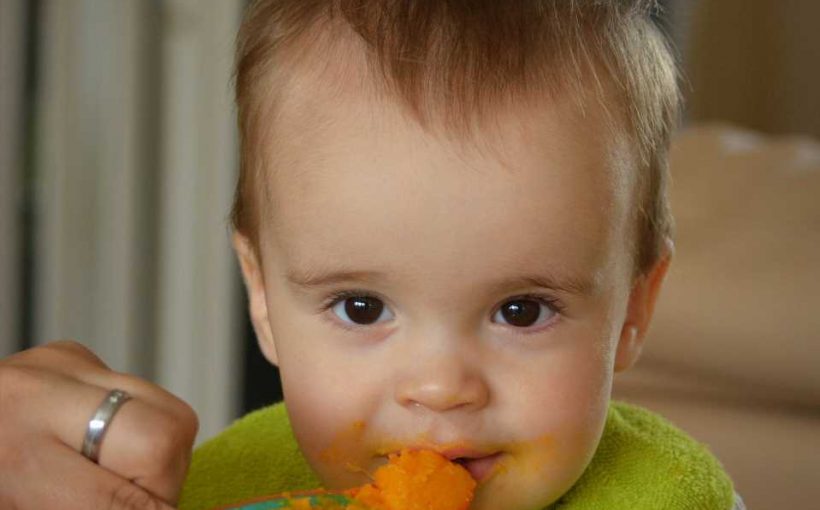
The Food and Drug Administration urged food manufacturers last week to significantly reduce the amount of lead in processed baby food.
Lead is toxic for anyone, but children are particularly vulnerable to the effects of lead exposure because they are still growing. Elevated blood levels of lead can cause damage to the brain and nervous system, slow physical and emotional development, and contribute to learning, behavior, hearing, and speech problems.
Many Philadelphia families are all too aware of the potential dangers of lead poisoning from old, lead water pipes and paints in the region’s pre-1970s housing stock.
But you may be wondering: Why is there any lead at all in my baby’s food?
“Try not to panic,” said Kim Kramer, a clinical dietitian at Nemours Children’s Health in Delaware. “I know it sounds scary.”
The FDA’s new guidelines aren’t in response to a spike in contamination, but rather are part of an ongoing effort to reduce the amount of heavy metals that have long been in our foods, she said.
Let’s get to it.
Why is there lead in baby food?
Fruits, vegetables, and grains absorb lead through the soil they’re grown in. Soil naturally contains some lead, though contamination from leaded gasoline, exterior lead-based paint, and industrial development have raised lead levels in soil.
It’s impossible to remove all lead from food, but the FDA’s new guidelines call for food manufacturers to remove as much of it as possible—and ensure that their production processes don’t contribute lead.
What are the new FDA lead guidelines?
The FDA now recommends limiting lead to 10 parts per billion in fruit, vegetable, and meat packaged products, such as jars, pouches, and tubes. Dry cereal should have no more than 20 parts per billion of lead.
These limits could lower infant lead exposure by 24% to 27%, the FDA estimates.
Although there is no safe amount of lead, the amounts that would be found in baby food under the new FDA guidelines are tiny, Kramer said. Think of it this way: Out of every billion molecules in an apple, 10 may be lead.
The new recommendations are part of Closer to Zero, an FDA initiative to reduce the amount of lead and other heavy metals specifically in foods consumed by infants and young children.
Is homemade baby food safer?
Not necessarily. A 2022 study by Health Babies Bright Futures, a food safety organization, found that homemade baby foods were just as likely as store-bought baby foods to contain heavy metals such as lead.
“Even if you’re buying organic food from the grocery store, you’re going to run into the same problems,” said Kate Breznak, a clinical dietitian at St. Christopher’s Hospital for Children in Philadelphia.
Again, that’s because lead in food primarily comes from the soil and water used to grow crops.
What can I do to limit my child’s lead exposure through food?
Offer as many different foods as possible. Metal and toxin levels vary, which is why Breznak and Kramer recommend rotating the foods children eat. You may consider limiting rice products, as these often contain greater amounts of lead.
Talk to your child’s pediatrician if you are concerned about potential lead exposure. Blood lead level testing is mandatory between ages 1 and 2 for children covered by Medicaid, and common among young children with private insurance.
The CDC considers a blood lead level of 3.5 micrograms of lead per deciliter of blood (μg/dL) concerning. That’s down from a longtime standard of 5 μg/dL—a change intended to more quickly identify children at risk for lead poisoning and remedy the sources of exposure.
2023 The Philadelphia Inquirer, LLC.
Distributed by Tribune Content Agency, LLC.
Source: Read Full Article
